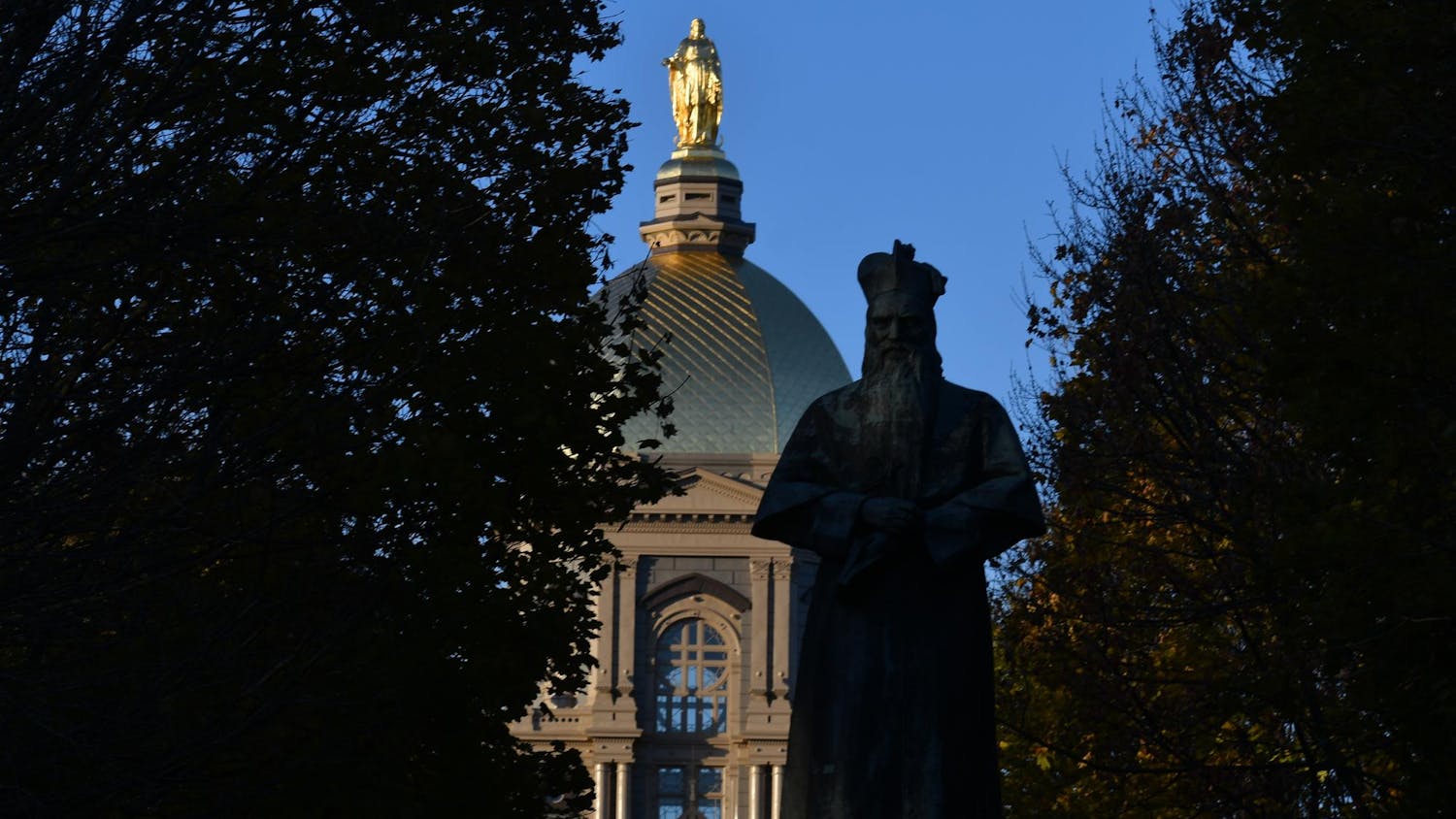Campus Dining at Notre Dame produces over 400 tons of food waste annually — 10 percent of the University’s overall waste. While in the past almost all of this food waste would end up in a landfill, Campus Dining has partnered with the Office of Sustainability to implement the Grind2Energy system, which converts food waste into renewable energy with reusable byproducts.
Senior program director of sustainability Allison Mihalich said the project follows the lead of the Environmental Protection Agency’s hierarchy of reducing food waste: consume less, feed hungry people, feed animals and then use the waste for composting or industrial purposes. Inspired by this hierarchy, Grind2Energy will dramatically reduce Notre Dame’s waste, Mihalich said.
“We’re estimating north of 400 tons, and that means we can avoid approximately 270 tons of carbon emissions being released into the atmosphere, which will have lasting effects,” Mihalich said.
The project consists of three tanks — one at the Center for Culinary Excellence and one at each dining hall — that grind and hold food waste for two weeks before being emptied and transferred to Homestead Dairy, where the methane produced by the food waste will be harnessed for energy. The energy produced will be used to heat Homestead Dairy’s farm with excess energy being sold back to the electrical grid. The process’ solid and liquid byproduct will be used for dairy bedding and fertilizer, respectively.
While the tank built for the Center for Culinary Excellence is already in use, director of Campus Dining Chris Abayasinghe said the dining halls’ tanks should be completed by summer.
“We are in the process today of seeking the install for North and South by the end of April,” he said. “We’re actually waiting for the weather to cooperate … because in order to anchor the evacuation tank, we have to be able to pour the concrete.”
For almost a decade, the University had been looking into ways to minimize waste and environmental impact, with faculty performing multiple research projects over that time. Mihalich said it was ultimately the work of students that pushed Notre Dame towards a solution.
“It wasn’t until the student projects were presented to the University leadership that we realized this isn’t just a commitment we made for ourselves,” she said. “It’s something that the students are clamoring for and it helped accelerate looking at what the best option would be.”
Senior Matthew Magiera, a chemical engineering major whose research into food waste and anaerobic digestion was fundamental to the project’s development into a reality, said he first began his work by chance when he became an intern at the Office of Sustainability in fall of 2017.
“It was kind of just as a function of me taking a job there,” Magiera said. “I was interested in working at the Office of Sustainability and when I joined on, the then-director Elizabeth Westfall was a chemical engineer, so I think she kind of had a vision. … She kind of had an idea that this is a project for one person to do over a long period of time. So, when I joined on, that was kind of what I started doing right at the start of the semester.”
Magiera said the University was supportive of Campus Dining and the Office of Sustainability’s efforts to implement the program.
“I think the fortunate thing was it wasn’t at this point as much going through administration,” he said. “As soon as you can make the point that this a smart thing to do and financially it makes sense to do as well, at that point it didn’t become pushing stuff through administration as much as getting people on board.”
The Grind2Energy system comes two and a half years after the University released its Sustainability Strategy in Sept. 2016. Mihalich said the food waste project marks a recommitment to the principles outlined in 2016.
“A project like this reinforces Notre Dame as a leader, as a good environmental steward,” Mihalich said. “We are one of two universities doing this right now, and the beauty in the solution is its simplicity and its flexibility.”
For Campus Dining, Grind2Energy is another evolution in its efforts to minimize waste and environmental impacts which stretch back decades, Abayasinghe said.
“We began the process in the late [1990s] of really just identifying how much plate waste was being generated by each student,” he said. “A few years ago, we teamed up with GreenND, for example, to do waste-weighs, so it helped us kind of think through what is the impact, what are we trying to achieve.”
Most recently, Campus Dining implemented a program called Leanpath, which measures food waste from the kitchen to identify trends and major sources of waste before food even reaches the consumer’s plate.
Because Notre Dame has built an infrastructure capable of supporting Grind2Energy, other organizations in the greater South Bend area now have the ability to take advantage of the program as well. Magiera said this has the potential to snowball into a large-scale sustainability effort throughout northern Indiana.
“The other thing that’s exciting is now that we have this mechanism in our region … that opens the door for grocery stores in the area because they have a lot of produce waste to send their produce waste there, instead of a landfill,” he said. “ … I think the most exciting part of this is the options it opens up for the local community on campus and the local community in the county in terms of making it easier on everybody to be sustainable.”
Read More
Trending









